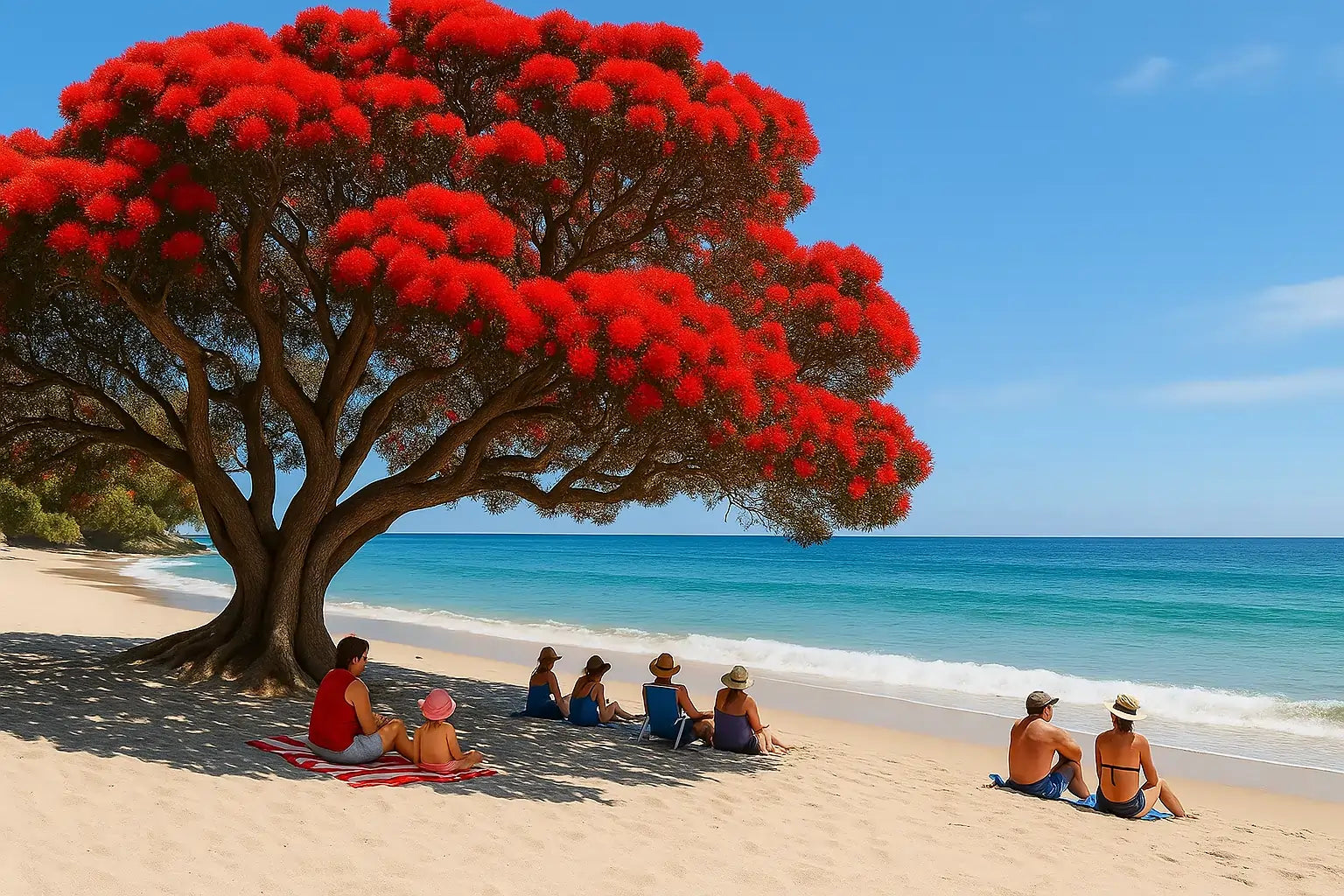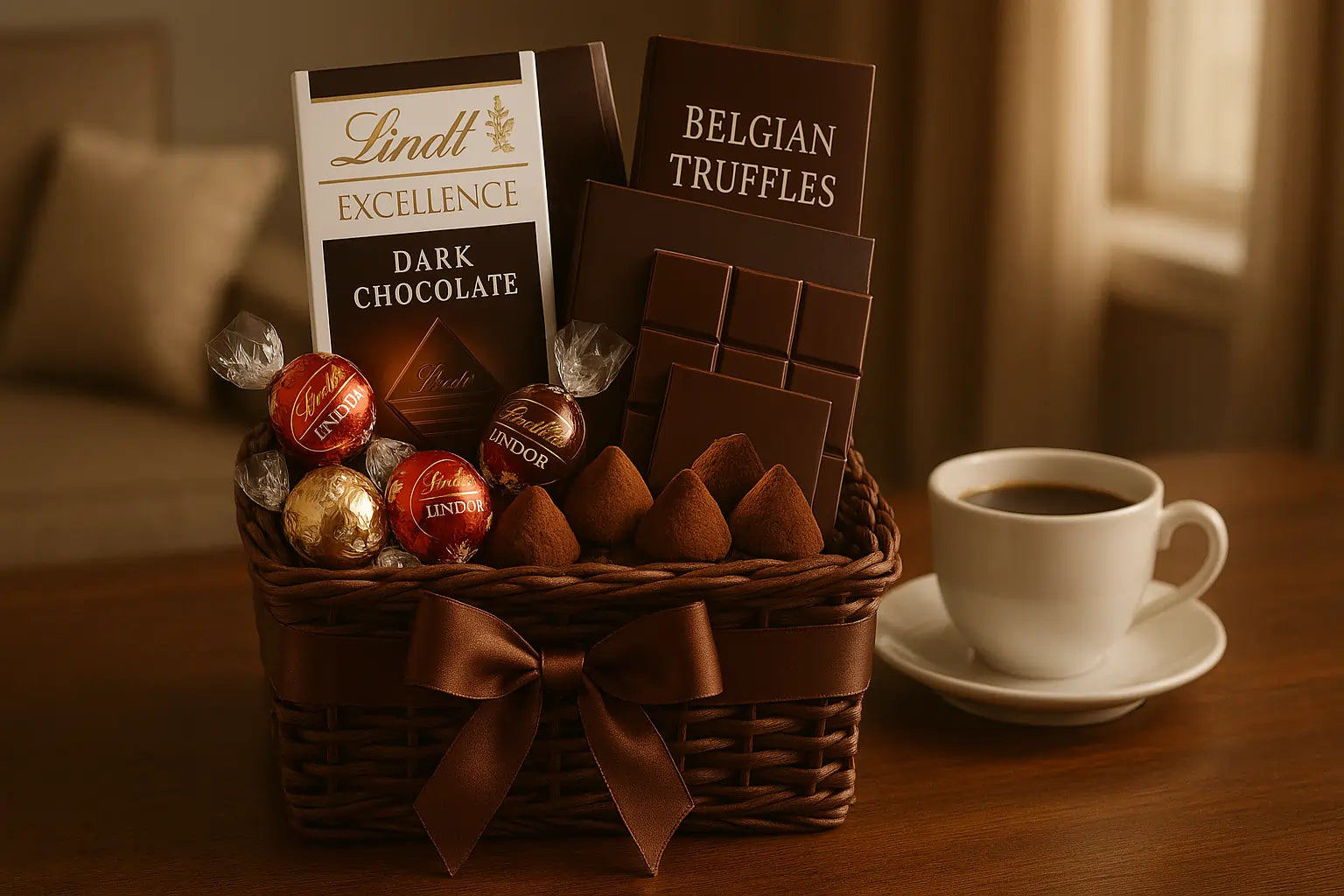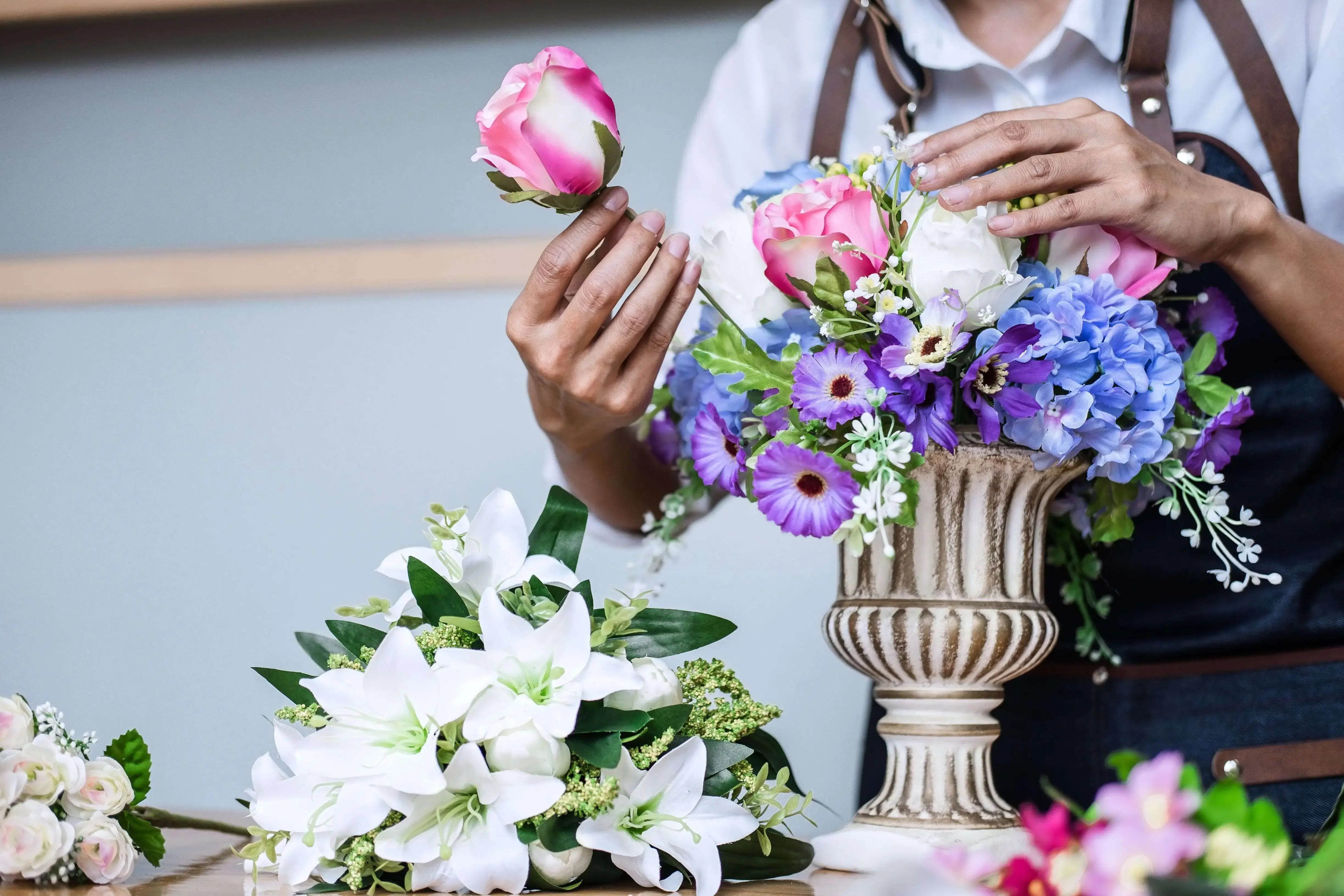
Pohutukawa: The Christmas Tree NZ Loves So Much
Every December, as families across the Northern Hemisphere gather around pine and fir trees, New Zealanders are treated to something entirely different. Along coastal cliffs and beaches, ancient pohutukawa trees burst into brilliant crimson bloom, their flowers carpeting the ground like festive confetti. For Kiwis, Christmas isn't about snow and evergreens. It's about summer sun, beach barbecues, and the unmistakable sight of pohutukawa blooms signaling the holiday season has arrived.
What is the Pohutukawa?
The pohutukawa (Metrosideros excelsa) is one of New Zealand's most iconic native trees. These coastal giants are instantly recognizable by their gnarled, twisted trunks and sprawling branches that seem to defy gravity as they reach toward the sea. What makes them truly spectacular are the masses of crimson flowers that cover the canopy each summer, earning them the affectionate nickname of New Zealand's Christmas tree.
Pohutukawa are perfectly adapted to coastal life. Their aerial roots cascade down from branches, helping anchor the tree against fierce ocean winds. The leathery leaves have a distinctive silver underside, which helps reflect harsh sunlight and reduce water loss from salt spray. These remarkable trees can live for hundreds of years, with some specimens estimated to be over 1,000 years old.
The blooming season typically runs from late November through January, with peak flowering happening right around Christmas time. This perfect timing, combined with the vibrant red flowers, made the pohutukawa an obvious symbol for Christmas celebrations in New Zealand.
How It Became NZ's Christmas Tree
The pohutukawa became the NZ Christmas tree when European settlers in the 19th century needed a local alternative to Northern Hemisphere pine and fir trees. The pohutukawa's brilliant red flowers, which bloom naturally in December during the Southern Hemisphere summer, perfectly coincided with Christmas timing and traditional holiday colors.
By the early 20th century, the pohutukawa had firmly established itself in New Zealand Christmas culture. Families would plan beach holidays around seeing the pohutukawa in bloom. Artists featured the trees in Christmas cards and decorations. The sight of pohutukawa flowers became as synonymous with Christmas in New Zealand as snow and holly were in Europe.
Today, the pohutukawa is deeply woven into the fabric of New Zealand Christmas celebrations. It represents the uniquely Kiwi experience of a summer Christmas, where the holiday is celebrated outdoors, often at the beach, under the shade of blooming pohutukawa trees.
Where to See Pohutukawa in New Zealand
The best places to see pohutukawa trees in New Zealand include Te Araroa (home to the country's largest specimen), the Coromandel Peninsula, Auckland's Waitakere Ranges, Mount Maunganui, and Wellington's south coast. These coastal locations feature spectacular displays of blooming pohutukawa from November through January.
Te Araroa on the East Cape is home to New Zealand's largest pohutukawa tree, estimated to be around 600 years old. This massive specimen has a trunk circumference of over 19 meters and provides shade for the entire village square.
The Coromandel Peninsula boasts some of the most impressive pohutukawa groves in the country. Beaches like New Chums Beach and Cathedral Cove are framed by ancient pohutukawa that create natural canopies over the sand.
Auckland's Waitakere Ranges and coastal areas like Piha and Karekare feature stunning pohutukawa displays. The contrast of crimson blooms against black sand beaches is particularly striking.
Mount Maunganui near Tauranga is surrounded by pohutukawa-lined beaches, making it a popular Christmas holiday destination for families wanting to experience the full Kiwi summer Christmas.
Wellington's south coast, particularly around Island Bay and Lyall Bay, features beautiful pohutukawa that have been shaped by the region's fierce southerly winds into dramatic, windswept forms.
Pohutukawa vs Rata: Spotting the Difference
The main difference between pohutukawa and rata is their habitat: pohutukawa grow exclusively along the coast at sea level, while rata are forest trees found at higher altitudes inland. Pohutukawa have darker green leaves with distinctive silver-white undersides and bloom from November to January, while rata have lighter green leaves and typically flower later from December to March.
Bringing the Pohutukawa Spirit Into Your Home This Christmas
While nothing quite compares to standing beneath a blooming pohutukawa on Christmas morning, you can capture that same festive spirit in your home with beautiful Christmas flowers.
Red roses, carnations, and seasonal blooms echo the vibrant crimson of pohutukawa flowers, bringing that classic Kiwi Christmas color palette indoors. A stunning red bouquet on your Christmas table creates an instant connection to New Zealand's summer holiday traditions.
For those hosting Christmas lunch or dinner, a centerpiece featuring rich red flowers paired with native greenery brings the outdoors in and celebrates the natural beauty of a New Zealand Christmas. It's a perfect way to honor the pohutukawa tradition while creating a festive atmosphere in your home.
Christmas gift baskets make perfect gifts for the holiday season, filled with premium chocolates, gourmet treats, and festive goodies that everyone loves. Whether you're thanking a colleague, surprising a neighbor, or sending something special to family, a gift basket packed with delicious chocolates and treats is a thoughtful way to spread Christmas cheer across New Zealand.
At Bloomex, we offer a range of NZ flowers and gift baskets that celebrate the season. Browse our Christmas collection to find the perfect way to bring festive joy into your home or send it to loved ones across New Zealand.
FAQs:
How big do pohutukawa trees grow?
Pohutukawa trees can grow up to 20 meters tall with a canopy spreading 35 meters wide. Ancient specimens can have trunks over 2 meters in diameter.
Are pohutukawa trees protected in Auckland?
Yes, many pohutukawa trees in Auckland are protected under the Auckland Unitary Plan. You need resource consent before pruning or removing protected trees. Check with the Auckland Council before doing any work on a pohutukawa.
Are pohutukawa flowers poisonous?
No, pohutukawa flowers are not poisonous to humans or animals. The nectar-rich flowers are actually an important food source for native birds like tui and kereru.
Can you cut down a pohutukawa?
Cutting down a pohutukawa usually requires resource consent from your local council, especially for significant or protected trees. Unauthorized removal can result in heavy fines. Always check with your council first.
How do pohutukawa flowers form?
Pohutukawa flowers form in clusters at branch ends during late spring. Each flower has numerous bright red stamens that create the distinctive crimson pompom appearance, triggered by warm temperatures and long summer days around Christmas time.
What makes the pohutukawa different from a traditional Christmas tree?
Pohutukawa is the Christmas tree NZ loves for a reason. Unlike traditional Northern Hemisphere Christmas trees, the pohutukawa is New Zealand's Christmas tree that thrives in summer heat and coastal conditions. While pine and fir trees are evergreens, the pohutukawa is a flowering tree that produces stunning crimson blooms.
What are New Zealand's beloved native plants?
Here are plants widely recognised as New Zealand's national flower:
Kōwhai (Sophora species) - The most widely recognised as the unofficial national flower, especially for the South Island. Its bright yellow flowers are iconic.
Kaka Beak/Kōwhai Ngutukākā (Clianthus) - These striking red flowers that look like a parrot's beak are another distinctly New Zealand native, though they're critically endangered in the wild.
Silver Fern - While technically not a flower, the silver fern (particularly Cyathea dealbata) is probably New Zealand's most famous plant symbol, appearing on the All Blacks jersey and used as a national emblem.


